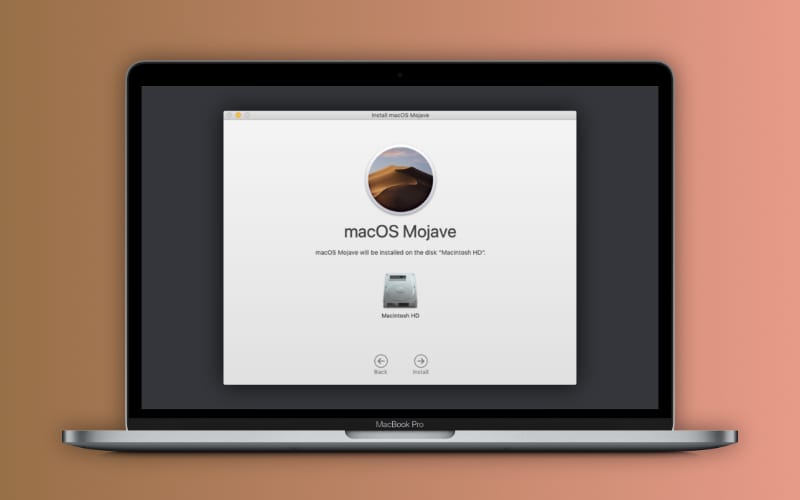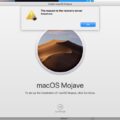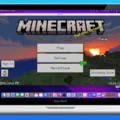Upgrading your Mac to the latest macOS Mojave can bring exciting new features and improvements. However, sometimes the upgrade process can encounter issues, and your Mac may get stuck during the installation. If you find yourself in this situation, don’t panic. There are several troubleshooting steps you can follow to resolve the problem and successfully complete the upgrade.
1. Restart or Force Restart Your Mac:
The first step is to restart your Mac. Sometimes, a simple restart can resolve minor glitches and allow the installation to proceed smoothly. If a regular restart doesn’t work, you can try force restarting your Mac by holding down the power button until it shuts down completely, then pressing it again to turn it back on.
2. Check Your Internet and Network Settings:
A stable and reliable internet connection is crucial for a successful macOS Mojave installation. Ensure that your Mac is connected to a stable network, and check your internet connection speed. Slow or intermittent internet can cause installation issues. If possible, try using a wired connection instead of Wi-Fi.
3. Connect Your Charger and Free Up Space:
Make sure your Mac is connected to a power source during the upgrade process. Installing the new macOS requires a significant amount of power, and a low battery can interrupt the installation. Additionally, ensure that you have enough free disk space for the upgrade. macOS Mojave requires at least 20GB of free space on your startup disk.
4. Install the Update in Safe Mode:
If your Mac is still stuck during installation, you can try installing macOS Mojave in Safe Mode. To do this, shut down your Mac, then turn it on and immediately press and hold the Shift key until the startup options window appears. Select your startup disk and press and hold the Shift key again while clicking “Continue in Safe Mode.” Log in to your Mac and attempt the installation from there.
5. Reset Your Mac’s SMC and NVRAM:
Resetting the System Management Controller (SMC) and Non-Volatile Random-Access Memory (NVRAM) can help resolve various issues, including installation problems. The process varies depending on your Mac model, so refer to Apple’s support documentation for detailed instructions on how to reset the SMC and NVRAM.
6. Check if Apple’s Servers Are Acting Up:
Sometimes, installation issues can be caused by problems with Apple’s servers. Before troubleshooting further, check if there are any reported server issues or outages by visiting Apple’s System Status page. If there are widespread issues, you may need to wait until they are resolved before attempting the installation again.
7. Give It Some Time:
If none of the above steps work, it’s possible that the installation is taking longer than expected due to various factors. Depending on your Mac model and internet connection speed, the macOS Mojave installation can take anywhere from 30 to 40 minutes. It’s important to be patient and allow the process to complete before taking further action.
Encountering issues during the macOS Mojave upgrade can be frustrating, but there are several troubleshooting steps you can follow to resolve the problem. By restarting your Mac, checking your internet connection, installing in Safe Mode, resetting the SMC and NVRAM, checking Apple’s server status, and being patient, you can increase the chances of a successful installation. If all else fails, contacting Apple Support for further assistance may be necessary.

What Do You Do If Your Mac is Stuck Updating?
If your Mac is stuck updating, there are several steps you can take to resolve the issue:
1. Restart or Force Restart Your Mac: Sometimes, a simple restart can fix the problem. Press the power button on your Mac and choose the Restart option. If that doesn’t work, you can force restart your Mac by holding down the power button until it shuts down, and then press it again to turn it back on.
2. Check Your Internet and Network Settings: Ensure that your Mac is connected to a stable internet connection. You can try connecting to a different network or restarting your router if necessary.
3. Connect Your Charger and Free Up Space: Make sure your Mac is connected to its charger while updating. Additionally, ensure that you have enough free disk space for the update to install. Delete unnecessary files or move them to an external drive to create more space if needed.
4. Install the Update in Safe Mode: Boot your Mac in Safe Mode by holding the Shift key while restarting. Once in Safe Mode, try installing the update again. Safe Mode can help troubleshoot software conflicts that may be causing the update to fail.
5. Reset Your Mac’s SMC and NVRAM: Resetting the System Management Controller (SMC) and Non-Volatile Random-Access Memory (NVRAM) can sometimes fix update issues. Instructions for resetting SMC and NVRAM can be found on Apple’s support website.
6. Check if Apple’s Servers Are Acting Up: Occasionally, the problem may not be with your Mac but with Apple’s servers. Check Apple’s System Status page to see if there are any reported issues with the update servers.
7. Give It Some Time: Updating your Mac can take time, especially if it’s a major update. If your Mac appears to be stuck on a progress bar or spinning wheel, be patient and allow it more time to complete the update. Interrupting the update process can cause further complications.
By following these steps, you should be able to resolve the issue of a stuck update on your Mac.
How Long Should the Mojave Update Take?
The installation time for macOS Mojave can vary based on several factors. However, under normal circumstances, the process should take approximately 30 to 40 minutes. It is important to note that this estimation assumes a smooth download and installation process without any issues or errors.
To provide a more comprehensive understanding, let’s break down the potential steps involved in the installation process:
1. Downloading the update: The time required for downloading macOS Mojave will depend on the speed of your internet connection. Faster internet speeds will result in a quicker download. On average, the download should take around 10 to 20 minutes.
2. Preparing for installation: After the download is complete, macOS Mojave will prepare for installation. This step involves verifying the update and preparing your system for the installation process. This preparation phase usually takes a few minutes.
3. Installing macOS Mojave: Once the preparation is complete, the installation process will begin. This step involves copying and configuring system files, updating software components, and making necessary system changes. The installation process can take anywhere from 15 to 30 minutes, depending on the speed of your computer and the complexity of your system configuration.
4. Finishing touches: After the installation is complete, macOS Mojave will perform some final tasks, such as optimizing system performance and migrating your user settings and files. This finalization phase typically takes a few minutes.
It is important to note that these time estimates are approximate and can vary based on individual system specifications and any unforeseen issues that may arise during the installation process.
If everything goes smoothly, you can expect the macOS Mojave update to take around 30 to 40 minutes.
Why is MacOS Mojave Not Installing?
MacOS Mojave may fail to install due to various reasons. Here are some possible explanations for why the installation may not be successful:
1. Inadequate disk space: macOS Mojave requires a certain amount of free disk space to install. If your Mac’s hard drive is nearly full, the installation may fail. Ensure that you have enough free space by removing unnecessary files or applications.
2. Incompatible hardware: Sometimes, certain Mac models may not be compatible with macOS Mojave. Check if your Mac is listed as a supported device for Mojave. If not, your Mac may not meet the minimum system requirements.
3. Unsupported software: If you have software installed on your Mac that is not compatible with macOS Mojave, it can cause conflicts during the installation process. Check if all your applications and drivers are compatible with Mojave. Update or remove any incompatible software before attempting to install.
4. Internet connection issues: A stable and reliable internet connection is crucial for a successful installation. If your internet connection is slow or intermittent, it may cause the installation to fail. Ensure that you have a stable connection throughout the installation process.
5. Corrupted installation file: If the macOS Mojave installation file you downloaded is corrupted, it can lead to installation problems. Try re-downloading the installer from the Mac App Store and attempt the installation again.
6. Insufficient RAM: MacOS Mojave requires a minimum amount of RAM to function properly. If your Mac has insufficient memory, the installation may fail. Check your Mac’s RAM capacity and consider upgrading if necessary.
7. Security software interference: Sometimes, security software or firewalls can interfere with the installation process. Temporarily disable any antivirus or firewall software before attempting the installation.
If you are still experiencing issues with installing macOS Mojave after considering these possibilities, it may be helpful to seek assistance from Apple Support or consult with a professional technician.
How Do You Fix a Stuck Install On Your Mac?
To fix a stuck install on your Mac, you can try the following steps:
1. Shut down your Mac: Press and hold the power button until your Mac turns off completely.
2. Start your Mac in safe mode: Turn on your Mac and continue to hold the power button until you see the startup options window. Select your startup disk and then press and hold the Shift key while clicking on “Continue in Safe Mode.” This will boot your Mac into safe mode, which can help resolve issues with the installation process.
3. Log in to your Mac: Once your Mac has started in safe mode, you will be prompted to log in. Enter your username and password. Note that you might be asked to log in again, so make sure to provide the correct credentials.
4. Troubleshoot the installation: In safe mode, your Mac will only load essential system files and extensions, which can help identify and resolve any issues causing the installation to be stuck. You can try the following troubleshooting steps:
– Check for software updates: Go to the Apple menu, then select “System Preferences” and click on “Software Update.” Install any available updates, as they may contain fixes for the installation issue.
– Remove unnecessary peripherals: Disconnect any external devices, such as printers, scanners, or USB drives, that are not essential for the installation process. Sometimes, conflicts with these peripherals can cause the installation to hang.
– Run disk utility: Go to the Apple menu, then select “Restart.” As your Mac restarts, hold down the Command and R keys until you see the Apple logo or a spinning globe. This will start your Mac in recovery mode. From the Utilities menu, select “Disk Utility” and run a scan on your startup disk to check for any errors or corruption.
– Reset NVRAM or PRAM: Shut down your Mac, then turn it on and immediately press and hold the Command, Option, P, and R keys together until you hear the startup sound for the second time. This will reset the NVRAM or PRAM, which stores certain settings that may affect the installation process.
5. Restart your Mac: After troubleshooting, restart your Mac normally by going to the Apple menu and selecting “Restart.” This will exit safe mode and allow your Mac to boot up normally.
If the above steps do not resolve the stuck installation issue, you may need to consider reinstalling macOS or seeking assistance from Apple Support or an authorized service provider.
Conclusion
Encountering issues with the macOS Mojave upgrade, such as it getting stuck or taking longer than expected, can be frustrating. However, there are several steps you can take to remedy these problems.
Firstly, try restarting or force restarting your Mac. This simple action can often resolve minor software glitches. Additionally, check your internet and network settings to ensure a stable connection. Sometimes, a poor network connection can cause the upgrade to stall.
If your Mac is low on battery or storage space, connect it to a charger and free up some space before attempting the upgrade again. It’s also worth installing the update in safe mode, as this can help bypass any compatibility issues or conflicting software.
Resetting your Mac’s SMC (System Management Controller) and NVRAM (Non-Volatile Random-Access Memory) can also be effective in resolving upgrade problems. Instructions for these processes can be found on Apple’s support website.
It’s also worth checking if Apple’s servers are experiencing any issues. Sometimes, widespread server problems can cause delays or failures in the upgrade process. In such cases, it’s best to wait for Apple to resolve the issue and try again later.
It’s important to give the upgrade process some time. On average, macOS Mojave installation should take about 30 to 40 minutes. However, this timeframe can vary depending on various factors such as internet speed and system specifications. Patience is key during this process.
While encountering issues during the macOS Mojave upgrade can be frustrating, following these steps should help resolve most problems. If all else fails, it’s recommended to seek assistance from Apple Support or visit an authorized service provider for further troubleshooting.








